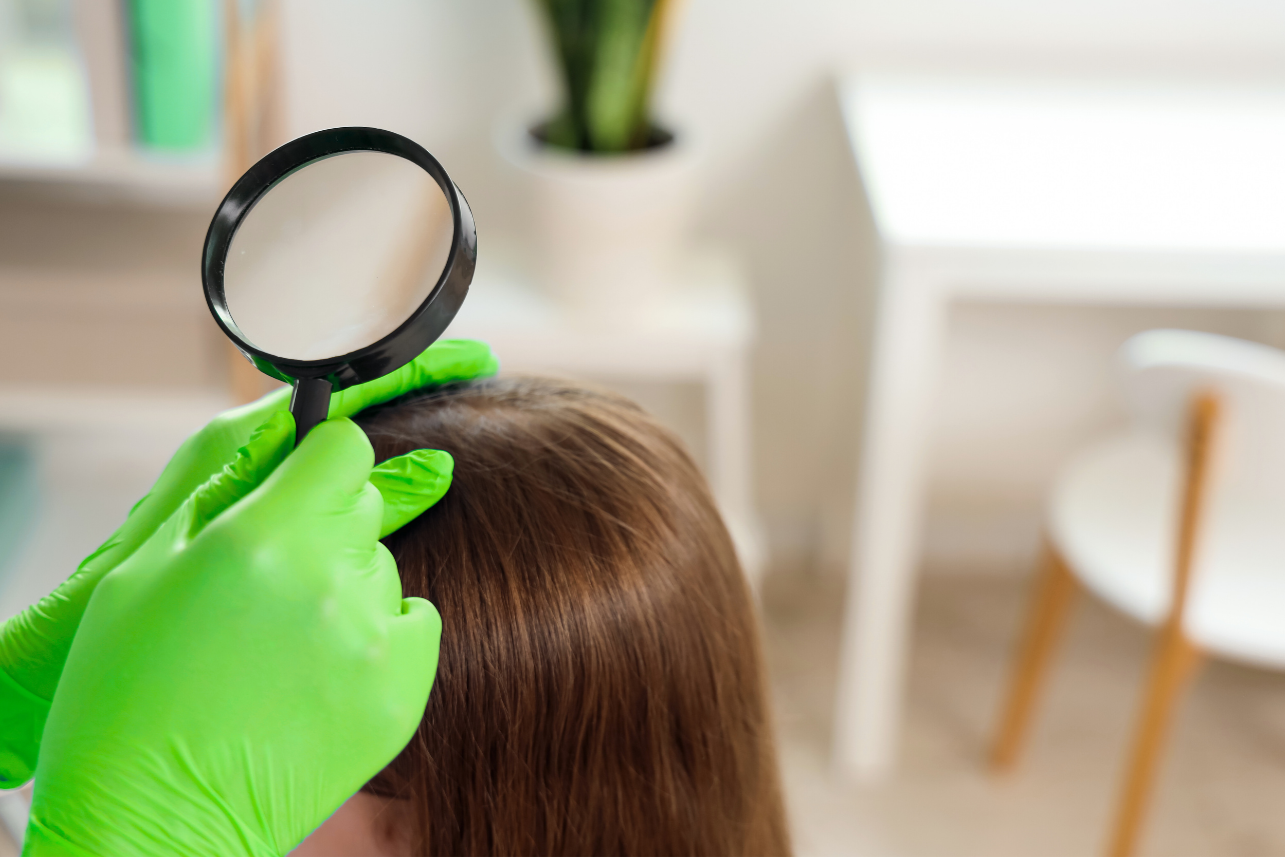The Lifecycle of Lice
Lice develop through three main stages: nit, nymph, and adult. The nit, or egg, is firmly attached to the hair shaft near the scalp and hatches in about 7–10 days.
Once hatched, the nymph goes through three growth stages, called instars, over roughly 9 days. In the first instar, the tiny, translucent nymph begins feeding on blood almost immediately. During the second instar, it grows larger and darker, shedding its outer layer to expand. By the third instar, it looks like a miniature adult but cannot yet reproduce.
After the final molt, it becomes an adult louse, about 2–3 mm long, capable of laying eggs within a day or two. Adult lice live for up to 30 days, feeding several times a day and laying up to 10 eggs daily—continuing the infestation cycle if untreated.
Steps of a proper head check
Regular head checks are the best way to catch lice early and prevent them from spreading. Whether you’re a parent, teacher, or caregiver, following these simple steps ensures a thorough and effective screening.
-
Choose a well-lit space; natural sunlight or a bright fluorescent light works best. Have a fine-tooth louse comb, paper towels, and a spray bottle of water (to lightly dampen hair) ready.
-
Divide the hair into small sections using clips or ties. This helps you see the scalp clearly and check every strand from root to tip.
-
Starting at the scalp, use the lice comb to examine each section. Look for live lice (tiny, moving insects) and nits (small oval eggs) attached near the base of the hair shaft, especially around the ears and nape of the neck.
-
During an active infestation, repeat head checks every 2–3 days. This helps catch any newly hatched lice before they mature and lay more eggs.
Helpful Tip:
Consistency is key! Even after treatment, continue checking weekly for a few weeks to ensure all lice and nits are gone.


